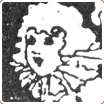 | |||||||||
| |||||||||
Revues at this time were made up of a series of short items, usually of a topical and satirical nature, and included songs, sketches, monologues and a great deal of dance. Frivolities of 1920 was a G.M. Anderson revue that came from the United States “direct from long runs in New York and San Francisco” to play at the Avenue Theatre. The preview for the show, which was billed as “The Revue of Revues,” shows it to be the kind of work that is in perfect sync with the times. The endless onslaught of bad news during World War I, which had ended only a couple of years earlier, was hopefully a thing of the past, and the title made sure audiences knew they had nothing to fear: this was a good news show. Despite the writing being an obvious puff piece, with the copy probably originating in a press release, it illustrates the kind of values - modernity, speed, verve - that the decade was known for. “Frivolities” moves entirely in the present. Its rapid tempo does not permit it to ponder over the past. Current, political, social and theatrical episodes are adroitly burlesqued, but as for plot, this revue scorns it and admits its scorn. It is a fleet succession of comic and lyric surprises framed in color-splashed settings. The parade of incidents is woven together in a musical score that is now lazy and languorous - suggestive of the tropics - now swift and jazzical - reminiscent of Broadway and the Broadwalk (Sun, Sept. 12, 1920). The reviewer, writing anonymously in the Sun on September 23, thoroughly enjoyed the “approximately 100 Frivols” who performed in it. There was “a myriad of songs and dances, a splendid display of fashion, of costumes and almost-costumes, and the songs are those that have not been sung to death and the jokes are not of the variety that need an undertaker to perform the last obsequies. There are no chorus men.” Another typical revue was Spice of 1922 at Vancouver's Orpheum in the summer of 1923. However, though it was advertised as being “The Revue that Startled Broadway,” on August 1 the Vancouver Sun reviewer found it lacking in “that elusive twentieth century product known as 'pep'.” Pep was always needed, as were bright ideas, perhaps such as Miss Lola Girlie had when she originated “the heeled toe shoe,” as reported in a brief Sun item on February 21, 1925. A few days later, on the 24th, the Sun found that Girlie's Terpsichorean Tidbits, recently featured in Earl Carroll's Vanities (a significant revue that ran from 1923-1932 in New York) presented “the outstanding performance” in a “satisfying bill of vaudeville at the Pantages Theatre.” Children on stage continued to be a draw, and the many programs put on by local schools were well supported; this was no doubt due both to the event itself, and for the sake of the charity to which proceeds were usually dedicated. The Sun's society page often contained pictures of these hard-working youngsters. A successful North American touring troupe from the prairie metropolis called the Winnipeg Kiddies were a hit in their 1920 Revue during a four-day run at the Avenue Theatre, although opening night wasn't well sold. “It may be said that had the Winnipeg Kiddies been hailed as having come from New York the box office results would have been different. However, those who attended were amply repaid and the loss falls upon those who stayed away.” The Winnipeg Kiddies, founded in 1915, had raised $20,000 for Allied recruiting during World War I. The children, all paid professionals, were mostly under 13 years of age, and included musicians, singers, dancers and actors. The skills of just one of the youngsters could have filled a vaudeville bill: “Versatile to a degree unusual in artists of tender years, Marjorie Guthrie offered among other things a [Scots comedian] Harry Lauder imitation, sang her songs sweetly, reaching her high notes with a truly prima donnaesque manner, proved herself a pianist of no mean ability and won instant approval with her eccentric dancing...” (Sun, Oct. 11, 1920). This kind of popular revue was only one of the competitive challenges faced by vaudeville during the twenties; radio and motion pictures, particularly the talkies at the end of the decade, were more serious threats. In any case, dance flourished in revues and while it was often in a simplistic fashion, with the dancers' pretty faces and shapely legs the main attraction, the sheer exuberance and physical energy of the performers must have been astonishing. (next page)
©2006, Dance Collection Danse | ||||


